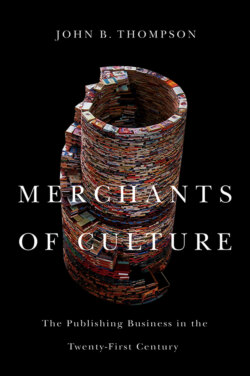Читать книгу Merchants of Culture - John B. Thompson - Страница 10
PREFACE TO THE SECOND EDITION
ОглавлениеWriting about a present-day industry is always going to be like shooting at a moving target: no sooner have you finished the text than your subject matter has changed – things happen, events move on and the industry you had captured at a particular point in time now looks slightly different. Immediate obsolescence is the fate that awaits every chronicler of the present. There is no remedy apart from revising and updating the text if and when the opportunity presents itself, though even then you will always remain a step behind the flow of events, freezing a world at the very moment that it slips away from you.
Thirty or forty years ago, the risks of obsolescence would not have seemed so great to someone writing about the book publishing industry: sure, the industry was changing in important ways, but the basic principles and practices that characterized the industry were not being called into question. Publishing houses were being bought up by large corporations, retail chains and literary agents were becoming more powerful and the traditional world of trade publishing was being transformed into a big business. But the book itself as a cultural object – that unique combination of print and paper, the fusing together of the written word and the material artefact – was being produced in much the same way as it had been for centuries. Today that is no longer so. As we enter the second decade of the twenty-first century the oldest of the media industries finds itself in the throes of tumultuous change, struggling to cope with the impact of a technological revolution that is stripping away some of the old certainties, undermining traditional models and opening up new possibilities in ways that are at once exciting and disorientating. What once seemed like a quiet backwater of the media industries has suddenly become news.
In preparing the text for the paperback edition I have concentrated on ensuring that the book takes account of significant new developments and that empirical data are updated where it is important to do so. There are many contexts where data from 2008 or 2009 continue to provide a good picture of how the industry looks today, and I have therefore left the figures as they were. But there are other contexts, especially in the chapter on the digital revolution, where a more thorough updating was necessary – when you’re in the midst of a revolution, two years can seem like an eternity. I returned to around 20 of my sources in London and New York and spoke with them about the changes that have taken place, partly in order to make sure that I was fully apprised of the most important developments but also in order to see how their views have altered over time as they have struggled to cope with the changes swirling around them. Once again, I am enormously grateful to these individuals – who will, as before, remain anonymous – for their time, generosity and openness. However, I have resisted the temptation to rewrite the text and revisit every actor and organization: while much has happened, the basic structures and dynamics of the world of Anglo-American trade publishing remain pretty much as I described them. Of course, we cannot rule out the possibility that these structures and dynamics will be transformed over time by the changes currently taking place: no one should ever underestimate the disruptive potential of new technologies. But at the same time we must see that the development and implementation of new technologies are always part and parcel of a broader set of social relations in which agents and organizations are bound together in relations of cooperation, competition and sometimes conflict with one another, and where outcomes are shaped as much by structures of power as they are by the intrinsic properties of technologies as such. This book describes those structures, shows how they arose, how they shape the practices of actors in the field and how they are changing today, and it intentionally leaves open the question of how far these structures will be altered in a future that remains – and is likely to remain for some while to come – uncertain.
J.B.T., Cambridge
